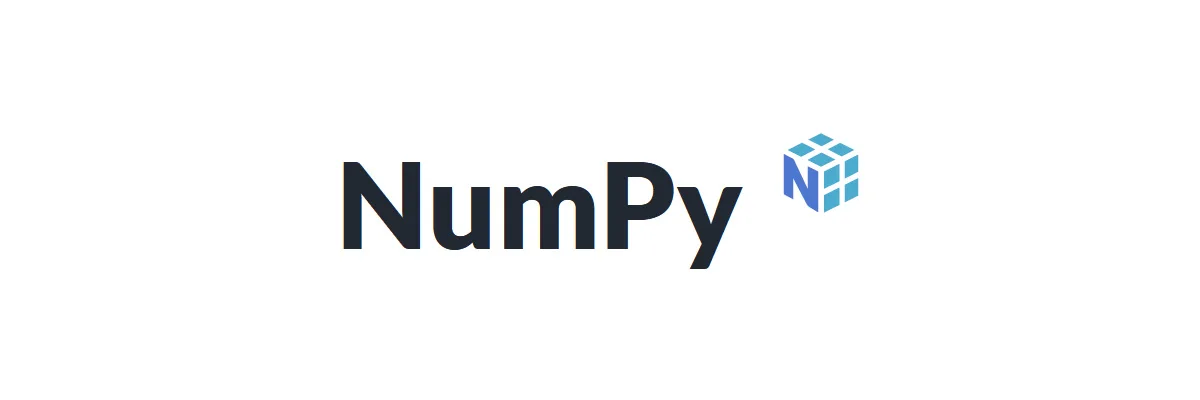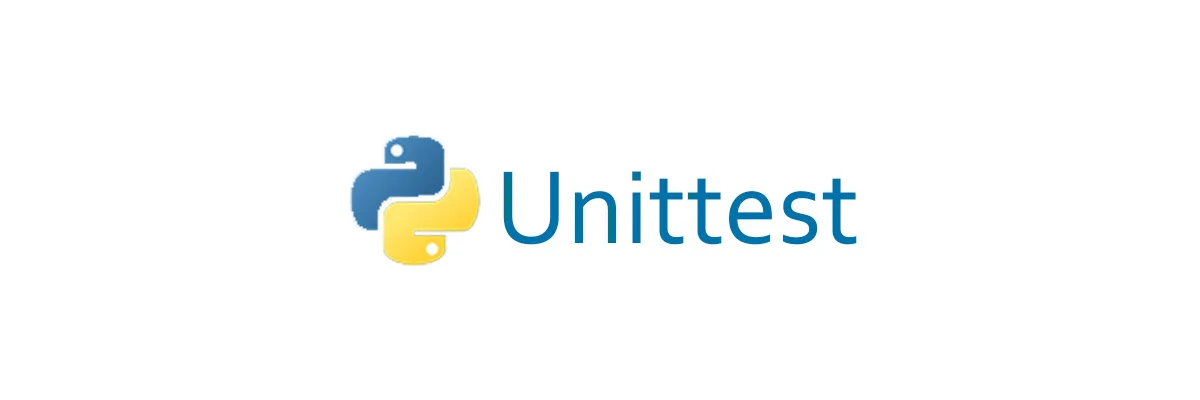20+ Best Python Frameworks for Developers in 2024
Python has long been a favorite among developers for its simplicity, readability, and versatility. It is one of the most widely used programming languages and has a vibrant ecosystem of frameworks that make development easier across various domains. Python frameworks offer developers powerful tools to build robust applications efficiently, from web development to machine learning.
Best Ready to Use Web Themes & Templates
Bootstrap 5 Templates
Bootstrap One Page Templates, Bootstrap 5 Templates, Free Bootstrap Templates
This article examines the most popular Python frameworks for various development needs. Whatever your skill level or project requirements, there is a framework that suits your needs.
Bottle
Bottle is a lightweight and minimalist Python framework that provides a simple yet effective approach to web development and support for plugins; Bottle offers developers a streamlined platform for building web applications. Bottle provides a versatile and user-friendly solution for a beginner looking to learn web development or an experienced developer seeking a lightweight framework for your projects. Some key features of Bottle are:
- Minimalistic Design: Bottle prides itself on its minimalistic design, with a small codebase and a straightforward architecture. It aims to keep things simple and easy to understand, making it an ideal choice for developers who prefer simplicity over complexity.
- Single File Application: One of the critical features of Bottle is its ability to create single-file applications. It means you can build and run a web application using a single Python file, making it easy to deploy and manage small projects without additional dependencies.
- Built-in HTTP Server: Bottle has a built-in HTTP server, allowing you to run your web application without requiring external server software. This built-in server is suitable for development and testing purposes. However, you may deploy Bottle applications for production environments using other server options such as uWSGI or Gunicorn.
- Routing and URL Dispatching: Bottle provides a simple yet powerful routing mechanism, allowing you to define and map routes to specific functions or handlers. It makes it easy to create clean and organized code for handling different URL endpoints within your application.
AIOHTTP
Aiohttp is a robust asynchronous Python framework that empowers developers to build high-performance web applications. With features such as asynchronous request handling, web server and client components, routing and middleware support, WebSocket capabilities, and extensibility, Aiohttp provides a robust platform for creating modern and scalable web applications. Aiohttp offers the tools and flexibility to bring your ideas to life. Some key features of Aiohttp are:
- Asynchronous Request Handling: Aiohttp is built on Python’s asyncio library, allowing developers to write asynchronous code to handle incoming HTTP requests. This asynchronous approach enables Aiohttp to manage extensive concurrent connections without blocking, improving performance and scalability.
- Web Server and Client: Aiohttp provides server-side and client-side components, allowing developers to build complete web applications from end to end. The server component will enable you to create HTTP servers to handle incoming requests, while the client component enables you to make asynchronous HTTP requests to external APIs or services.
- Routing and Middleware: Aiohttp includes a powerful routing mechanism that allows you to map URL patterns to request handler functions. Additionally, Aiohttp supports middleware, which allows you to intercept and modify incoming requests or outgoing responses, enabling you to add custom logic such as authentication, logging, or error handling.
- WebSocket Support: Aiohttp includes built-in support for WebSockets, allowing you to create real-time bidirectional communication between the client and server. It enables you to build interactive web applications that push real-time client updates without polling or long-polling techniques.
Asyncio
Asyncio is a robust framework for writing asynchronous Python code, enabling developers to build high-performance and scalable applications. Asyncio offers a flexible and efficient solution for handling asynchronous programming tasks. Asyncio provides a robust foundation for modern Python development. For building web servers, networking applications, or asynchronous APIs, Asyncio offers a flexible and efficient solution for handling asynchronous programming tasks. Some critical features of Asyncio are:
- Asynchronous I/O Operations: Asyncio simplifies writing asynchronous code by providing a framework for managing I/O-bound tasks. It allows developers to perform non-blocking I/O operations, such as network requests and file I/O, without blocking the execution of other tasks.
- Event Loop: At the core of Asyncio is the event loop, which manages the execution of asynchronous tasks. The event loop continuously runs and schedules tasks, ensuring efficient utilization of system resources and handling of I/O operations in a non-blocking manner.
- Coroutines and Tasks: Asyncio introduces the concept of coroutines, which are functions that can be paused and resumed asynchronously. Developers can define coroutines using the async def syntax, allowing concurrent execution of multiple coroutines within a single event loop. It created Tasks to execute coroutines asynchronously, providing a convenient way to manage and coordinate simultaneous operations.
- Concurrency and Parallelism: Asyncio enables developers to write highly concurrent code by leveraging coroutines and asynchronous I/O operations. It allows multiple tasks to run concurrently within the same event loop, improving performance and scalability for I/O-bound applications. Additionally, Asyncio supports parallelism using multiple event loops or integrating with third-party libraries such as asyncio.run_in_executor().
CherryPY
CherryPy presents an agile and adaptable framework for constructing web applications in Python. With its minimalist design, integrated HTTP server, robust URL mapping, flexible configuration options, plugin architecture, and adherence to the WSGI standard, CherryPy equips developers with the necessary tools to develop efficient and scalable web applications. Whether you’re a novice delving into web development or a seasoned developer crafting production-ready applications, CherryPy is a straightforward yet potent solution for Python-based web development. Some key features of CherryPy are:
- Minimalistic Design: CherryPy follows a minimalist design philosophy, with a small codebase and a straightforward API. It aims to provide developers with the essential tools for web development without unnecessary complexity or overhead.
- HTTP Server: CherryPy includes a built-in HTTP server, allowing developers to run their web applications without requiring external server software. This built-in server is suitable for development and testing purposes. However, you may choose to deploy CherryPy applications for production environments using other server options such as uWSGI or Gunicorn.
- URL Mapping and Routing: CherryPy provides a simple yet powerful mechanism for mapping URLs to Python code, allowing developers to define routes and map them to specific handler functions. It makes it easy to create clean and organized code for handling different URL endpoints within your application.
- Flexible Configuration: CherryPy offers flexible configuration options, allowing developers to customize various aspects of their web application, including server settings, URL routing, request handling, and more. Configuration can be programmatical or through configuration files, providing flexibility to suit different project requirements.
Django
Django stands as a versatile and feature-rich framework for Python-based web application development. Embracing a “batteries-included” philosophy, Django offers a comprehensive toolkit with an ORM, admin interface, URL routing, views, template engine, and robust security features. It allows developers to effortlessly create sophisticated and scalable web applications, regardless of their level of expertise. Whether you’re just starting in web development or tackling intricate projects, Django provides a solid foundation for building secure, maintainable, and efficient web applications. Some essential features of Django are:
- Batteries-Included Philosophy: Django follows a “batteries-included” philosophy, providing developers with a comprehensive set of tools and libraries out of the box. From authentication and authorization to database management and URL routing, Django comes bundled with essential features, eliminating the need for developers to reinvent the wheel.
- ORM (Object-Relational Mapping): Django includes a powerful ORM that abstracts away the complexities of database interaction. With the ORM, developers can define database models using Python classes, allowing seamless CRUD (Create, Read, Update, Delete) operations without manually writing SQL queries. Additionally, Django supports multiple database backends, including PostgreSQL, MySQL, SQLite, and Oracle.
- Admin Interface: Django’s admin interface automates the creation of an administration panel for managing site content. By simply registering models with the admin site, developers can access a customizable and user-friendly interface for performing CRUD operations on database records. The admin interface is highly extensible, allowing developers to customize and extend its functionality to suit specific project requirements.
- URL Routing and Views: Django provides a clean and elegant mechanism for URL routing and view handling. Developers can define URL patterns and map them to view functions or class-based views, which encapsulate the logic for processing HTTP requests and generating responses. This separation of concerns promotes code modularity and maintainability, facilitating the development of scalable and reusable components.
Kivy
Kivy is a robust and adaptable framework tailored for Python developers seeking to craft interactive applications effortlessly across various platforms. Boasting features like seamless cross-platform development, a rich UI toolkit, multitouch capabilities, hardware acceleration, intuitive Pythonic syntax, and extensibility, Kivy equips developers with all essential tools to manifest their creative visions. Whether you’re delving into mobile game development, crafting immersive multimedia experiences, or designing educational software, Kivy is a flexible and intuitive platform for realizing innovative applications. Some key features of Kivy are:
- Cross-platform Development: One of the critical features of Kivy is its ability to create applications that run seamlessly across multiple platforms, including Windows, macOS, Linux, iOS, and Android. This cross-platform compatibility allows developers to write code once and deploy it on various devices without modification.
- User Interface (UI) Toolkit: Kivy provides a comprehensive UI toolkit for creating rich and interactive user interfaces. Developers can design user interfaces using a wide range of widgets, layouts, and graphics primitives, making creating visually appealing and responsive applications accessible.
- Multitouch Support: Kivy offers built-in support for multitouch gestures, making it ideal for developing touch-based applications such as mobile games and interactive kiosks. Developers can quickly implement gestures such as tapping, swiping, pinching, and rotating, providing a seamless and intuitive user experience.
- Hardware Acceleration: Kivy leverages hardware acceleration to deliver high-performance graphics and animations, even on low-powered devices. It allows developers to create smooth, fluid user interfaces with complex animations and transitions.
Keras
Keras offers a powerful and intuitive framework for building and training deep learning models in Python. With its user-friendly API, modularity and flexibility, support for multiple backends, a wide range of applications, built-in training and evaluation functions, and vibrant community, Keras empowers developers and researchers to tackle complex deep learning tasks confidently. For beginners exploring the world of deep learning or an experienced researcher pushing the boundaries of AI, Keras provides the tools and resources needed to succeed. Some key features of Keras are:
- User-Friendly API: Keras offers a user-friendly and intuitive API that allows developers to build deep learning models quickly and easily. With its simple syntax and modular design, Keras enables rapid prototyping and experimentation, making it accessible to both beginners and experienced researchers.
- Modularity and Flexibility: Keras is built on a modular architecture, allowing developers to quickly assemble neural networks from pre-built layers and modules. This modular design promotes code reusability and flexibility, making it straightforward to customize and extend existing models to suit specific requirements.
- Support for Multiple Backends: Keras provides seamless integration with multiple deep learning backends, including TensorFlow, Theano, and Microsoft Cognitive Toolkit (CNTK). It allows developers to leverage the capabilities of their preferred backend while still benefiting from Keras’ high-level API and ease of use.
- Wide Range of Applications: Keras supports many deep learning applications, including image classification, object detection, natural language processing (NLP), and more. Its versatility and flexibility make it suitable for various tasks, from simple classification tasks to complex research projects.
NumPy
NumPy is a fundamental package for scientific computing in Python, providing support for multi-dimensional arrays and matrices and a collection of mathematical functions to operate on these multi-dimensional arrays, mathematical functions, broadcasting, vectorized operations, and seamless integration with other scientific computing libraries. For working on data analysis, machine learning, scientific simulations, or any other computational task, NumPy provides the tools and functionality to tackle complex numerical problems easily. Some key features of Numpy are:
- Multi-dimensional Arrays: NumPy’s core is the ndarray (n-dimensional array) object, which represents multi-dimensional arrays of homogeneous data types. These arrays are efficient for storing and manipulating large datasets and can be indexed, sliced, and reshaped easily.
- Mathematical Functions: NumPy provides various mathematical functions for performing array operations, including arithmetic operations, statistical functions, linear algebra operations, Fourier transforms, and more. These functions are optimized for performance and are implemented in C, making them highly efficient for numerical computations.
- Broadcasting: NumPy supports broadcasting, which is a powerful feature. It allows arrays of different shapes that combine in arithmetic operations. It simplifies the process of writing vectorized code and eliminates the need for explicit looping over array elements.
- Vectorized Operations: NumPy encourages vectorized operations, which are mathematical operations applied to entire arrays rather than individual elements. It leads to concise and efficient code optimized for performance, especially when working with large datasets.
Fastapi
FastAPI is a lightning-fast Python web framework that combines speed, simplicity, and scalability to streamline the development of web applications. With features such as async support, automatic documentation, validation and serialization, dependency injection, performance optimizations, and built-in support for WebSockets and background tasks, FastAPI provides developers with a powerful toolkit for building modern and efficient web applications. Whether you’re building APIs, microservices, or real-time applications, FastAPI offers a fast and intuitive solution for your web development needs. Some climactic features of FastAPI are:
- Async Support: FastAPI fully embraces asynchronous programming, allowing developers to write asynchronous code using Python’s async/await syntax. It enables non-blocking I/O operations, improving web application performance and scalability.
- Automatic Documentation: FastAPI automatically generates interactive API documentation based on your code’s type hints and function signatures. This documentation, powered by Swagger UI and ReDoc, provides a user-friendly interface for exploring and testing API endpoints without additional configuration.
- Validation and Serialization: FastAPI simplifies input validation and data serialization using Pydantic models. By defining data models with type annotations, developers can automatically validate incoming request data and serialize response data, reducing boilerplate code and improving code readability.
- Dependency Injection: FastAPI supports dependency injection, allowing developers to manage and inject dependencies into their route handlers easily. It promotes modularity and testability by decoupling business logic from external dependencies and making mock and test individual components easier.
Flask
Flask is a lightweight and versatile Python web framework that empowers developers to quickly build robust and scalable web applications. With features such as minimalistic design, routing, URL mapping, template engine, extension ecosystem, lightweight and scalability, and active community and documentation, Flask provides developers with the tools and resources to bring their web development projects to life. Whether you’re a beginner exploring web development or an experienced developer building complex applications, Flask offers a solid foundation for creating modern and efficient web applications. Some critical features of Flask are:
- Minimalistic Design: Flask follows a minimalistic design philosophy, providing developers with the essential tools for web development without imposing unnecessary complexity. This simplicity allows developers to quickly build web applications and focus on writing clean and concise code.
- Routing and URL Mapping: Flask offers a simple and intuitive routing mechanism, allowing developers to map URL endpoints to Python functions or view handlers. It makes it easy to define the behavior of different routes within the application and create clean and organized code structures.
- Template Engine: Flask includes a built-in template engine called Jinja2. It enables developers to generate dynamic HTML content by combining static HTML templates with Python code. It quickly creates dynamic and interactive web pages without complex JavaScript frameworks.
- Extension Ecosystem: Flask boasts a vibrant ecosystem of extensions that extend its functionality and add new features. These extensions cover many functionalities, including database integration, authentication, session management, form validation, and more, allowing developers to customize and enhance their Flask applications as quickly as needed.
PySimpleGUI
PySimpleGUI is a powerful and easy-to-use Python library for building graphical user interfaces. With features such as an intuitive API, cross-platform compatibility, multiple layout options, support for different widgets, event-driven programming, and integration with popular Python libraries, PySimpleGUI provides developers with the tools and resources needed to create GUI applications quickly and efficiently. For a beginner learning GUI development or an experienced developer building complex applications, PySimpleGUI offers a simple and effective solution for creating user-friendly interfaces in Python. Some key features of PySimpleGUI are:
- Easy-to-Use API: PySimpleGUI offers an intuitive and easy-to-use API that allows developers to create GUIs using minimal code. The API abstracts away the complexities of GUI development, making it accessible to developers of all skill levels.
- Cross-Platform Compatibility: PySimpleGUI is designed to work seamlessly across different operating systems, including Windows, macOS, and Linux. This ensures that GUI applications built with PySimpleGUI can be deployed and run on a wide range of devices without modification.
- Multiple Layout Options: PySimpleGUI provides various layout options for arranging GUI elements, including rows, columns, grids, and frames. Developers can choose the layout best suits their application’s needs and easily create complex and responsive user interfaces.
- Support for Different Widgets: PySimpleGUI supports a variety of GUI widgets, including buttons, text inputs, sliders, checkboxes, radio buttons, and more. These widgets can be easily customized and configured to meet the application’s specific requirements.
PyTorch
At its core, PyTorch is an open-source machine learning framework that facilitates developing and deploying deep learning models. Its dynamic computation graph sets PyTorch apart from its counterparts, which enables developers to define and modify computational graphs on the fly. This dynamic approach simplifies the process of building complex neural networks, enhances flexibility, and facilitates experimentation.
- Dynamic Computational Graph: Unlike static graph frameworks like TensorFlow, PyTorch adopts a dynamic approach, where computational graphs are constructed dynamically during runtime. This allows for greater flexibility and ease of debugging, as developers can inspect and modify the graph at each step of the computation.
- PyTorch’s Pythonic interface, deeply integrated with Python, is critical to its accessibility. It offers a natural and intuitive interface, leveraging Python’s expressive syntax and dynamic typing. This seamless experience for building and training neural networks makes PyTorch accessible to both beginners and seasoned practitioners.
- Automatic Differentiation: One of PyTorch’s hallmark features is its built-in automatic differentiation mechanism. Through the autograd package, PyTorch automatically computes gradients of tensors concerning a given loss function, enabling efficient gradient-based optimization algorithms such as stochastic gradient descent (SGD) and its variants.
- Extensive Library Support: PyTorch boasts a rich ecosystem of libraries and tools for various machine-learning tasks. From computer vision to natural language processing, PyTorch offers specialized modules and pre-trained models that accelerate development and empower developers to tackle diverse challenges.
Tornado
Tornado is an open-source Python web framework and asynchronous networking library renowned for its non-blocking I/O model, which allows it to efficiently handle thousands of connections simultaneously. Unlike traditional synchronous web frameworks, Tornado leverages asynchronous programming techniques to achieve high concurrency and low latency, making it well-suited for building scalable, real-time applications.
- Asynchronous and Non-blocking I/O: Tornado’s core architecture is built around an event-driven model, enabling it to handle I/O operations asynchronously without blocking the execution of other tasks. This concurrency model ensures that the server remains responsive under heavy loads, making it ideal for applications that require real-time updates and long-lived connections.
- Built-in Web Server: Tornado includes a fast and lightweight implementation, allowing developers to deploy applications quickly without needing external servers or dependencies. The web server supports HTTP and WebSocket protocols, providing a seamless platform for building traditional web applications and modern real-time APIs.
- WebSocket Support: Tornado offers native support for WebSocket, a communication protocol that enables bidirectional, full-duplex communication between clients and servers. With WebSocket support, developers can implement interactive features such as live chat, real-time notifications, and collaborative editing in their applications with minimal effort.
- Asynchronous Task Queue: Tornado provides an asynchronous task queue mechanism, allowing developers to offload long-running or blocking tasks to separate worker processes or threads. By decoupling I/O-bound and CPU-bound tasks, developers can improve the responsiveness and scalability of their applications, ensuring smooth performance even under heavy workloads.
Riverbank Computing
Riverbank Computing is a software development company that creates top-notch Python frameworks and tools. Thanks to their focus on simplicity, performance, and user-friendliness, their products have gained immense popularity among Python developers around the globe. The company is dedicated to the principles of open-source, ensuring that its projects remain accessible and free for everyone to use and contribute.
- PyQt: PyQt is a set of Python bindings for the Qt application framework, allowing developers to create cross-platform graphical user interfaces (GUIs) easily. Leveraging the power and flexibility of Qt, PyQt enables developers to build desktop applications that are visually appealing, highly functional, and responsive. With its comprehensive set of widgets, layout managers, and event-handling mechanisms, PyQt simplifies GUI development and empowers developers to create sophisticated applications with minimal effort.
- PySide: PySide is another set of Python bindings for the Qt framework, providing a more permissive licensing model than PyQt. Developed in collaboration with the Qt Company, PySide offers seamless integration with Qt’s C++ API, allowing developers to leverage the full power of the Qt framework from within Python. Like PyQt, PySide enables the creation of cross-platform GUI applications that run on Windows, macOS, Linux, and various embedded platforms.
Qt Python
Qt for Python is a set of Python bindings for the Qt framework, a popular C++ library for building graphical user interfaces and cross-platform applications. Developed by The Qt Company, Qt for Python provides a seamless integration of Qt’s powerful features and capabilities with Python’s simplicity and versatility. This fusion of technologies enables developers to harness the full potential of Qt for building modern, feature-rich applications while enjoying the productivity and ease of use of Python.
- Cross-Platform Compatibility: Qt for Python allows developers to create applications that run natively on multiple platforms with minimal code modifications. Whether you’re targeting desktop, mobile, or embedded platforms, Qt for Python ensures consistent behavior and performance across different operating systems and device types. This cross-platform compatibility simplifies the development process and enables developers to reach a broader audience with their applications.
- Rich Set of Widgets and Controls: Qt for Python provides a comprehensive collection of widgets, controls, and graphical elements for building intuitive and visually appealing user interfaces. From buttons and labels to complex data visualization components, Qt for Python offers everything developers need to create polished and professional-looking applications. Additionally, Qt’s powerful styling and customization capabilities allow developers to tailor the appearance and behavior of their applications to suit their specific requirements and preferences.
- Signals and Slots Mechanism: Qt for Python has a powerful mechanism called signals and slots. This feature allows different parts of an application to communicate with each other seamlessly. By connecting user interface elements to backend logic, changes in one part of the application can trigger corresponding actions in different parts. This reactive and decoupled architecture promotes maintainability, modularity, and code reusability, making developing and maintaining complex applications more accessible.
- Qt Designer Integration: Qt for Python seamlessly integrates with Qt Designer, a graphical tool for designing and prototyping user interfaces. With Qt Designer, developers can visually create and lay out UI components, define widget properties, and preview the appearance of their applications in real-time. The generated UI files can then be loaded and used in Qt for Python applications, allowing developers to rapidly iterate on their designs and create polished user interfaces with minimal effort.
Matplotlib
Matplotlib is an open-source Python library for creating two-dimensional plots and visualizations easily. Developed by John D. Hunter in 2003, It was inspired by MATLAB and aimed to provide a similar plotting experience in Python. Over the years, Matplotlib has evolved into a comprehensive toolkit for generating a wide range of plots, including line plots, scatter plots, bar plots, histograms, heatmaps, and more.
- Simple and Intuitive Interface: Matplotlib is a user-friendly library that lets users generate plots quickly. Its syntax is consistent, and the object-oriented approach ensures that creating basic line charts or multi-panel figures is a breeze. The API is intuitive, and users can customize their visualizations to suit their needs.
- Extensive Plotting Capabilities: Matplotlib offers a rich set of plotting functions and utilities for creating diverse plots and visualizations. From basic plots like line charts and scatter plots to more advanced visualizations like histograms, box plots, and contour plots, Matplotlib provides everything you need to explore and analyze your data effectively.
- Publication-Quality Output: Matplotlib is a plotting library that aims to create plots with a high-quality, professional look suitable for scientific research or publications. It provides users with a wide range of customizable options, such as fonts, colors, line styles, and axis properties, allowing them to adjust every aspect of their plots, ensuring clarity, readability, and aesthetic appeal.
- Interactive Plotting Support: Matplotlib supports both static and interactive plotting. Users achieve interactive plotting using tools like Jupyter notebooks and interactive backends such as Qt and Tkinter. This feature enables users to create dynamic and interactive visualizations that respond to user input and allow the exploration of complex datasets in real time.
Nose2
Nose2 is an open-source test runner and framework for writing and executing automated tests in Python. Built on the principles of simplicity and flexibility, Nose2 aims to provide developers with a user-friendly and intuitive testing experience. As a successor to the original Nose framework, Nose2 offers several improvements and enhancements, including better support for Python 3, a modular plugin architecture, and improved test discovery mechanisms.
- Simplified Test Discovery: Nose2 simplifies test discovery by automatically finding and running test suites and individual test cases within a Python project. Developers can organize their tests using Python’s built-in unit test framework or popular third-party testing libraries like pytest, allowing for greater flexibility and compatibility with existing test suites.
- Modular Plugin Architecture: Nose2 adopts a modular plugin architecture that allows developers to extend and customize its functionality according to their specific needs. With a wide range of built-in plugins and the ability to create custom plugins, developers can tailor Nose2 to suit their project requirements and integrate seamlessly with other development tools and workflows.
- Parallel Test Execution: Nose2 supports parallel test execution, allowing developers to run tests concurrently across multiple CPU cores for improved performance and efficiency. This feature is particularly beneficial for large projects with extensive test suites, where parallelization can significantly reduce the testing time and speed up the development cycle.
- Configuration and Customization: Nose2 provides extensive configuration options and customization capabilities, allowing developers to fine-tune various aspects of the testing process, such as test discovery, execution, reporting, and output formatting. By configuring Nose2 to meet their needs and preferences, developers can optimize the testing workflow and ensure consistent and reliable test results.
Scikit
Scikit-learn is an open-source Python library that provides a comprehensive suite of tools for machine learning and data analysis. Developed by a community of contributors, Scikit-learn is built on top of other popular Python libraries, including NumPy, SciPy, and matplotlib, and aims to provide simple and efficient solutions to standard machine learning tasks, such as classification, regression, clustering, dimensionality reduction, and model selection.
- Simple and Consistent API: Scikit-learn offers a simple and consistent API that makes it easy for users to work with machine learning models and algorithms. Whether you’re training a classifier, fitting a regression model, or clustering data points, scikit-learn provides a unified interface that allows you to perform these tasks with minimal code and effort.
- Wide Range of Algorithms: Scikit-learn provides many machine learning algorithms and techniques, including linear models, support vector machines (SVM), decision trees, random forests, k-nearest neighbors (KNN), and more. Additionally, Scikit-learn offers modules for preprocessing data, feature selection, and model evaluation, allowing users to easily build end-to-end machine learning pipelines.
- Efficient Implementation: Scikit-learn is built on top of optimized numerical libraries like NumPy and SciPy, ensuring its algorithms are efficient and scalable. Whether you’re working with small datasets or big data, scikit-learn provides fast and memory-efficient implementations of popular machine learning algorithms that can effectively handle large-scale datasets and complex models.
- Model Selection and Evaluation: Scikit-learn provides tools for model selection and evaluation, including cross-validation, grid search, and performance metrics. These tools allow users to evaluate their models’ performance, tune hyperparameters, and select the best model for a given task, ensuring that the resulting models are robust, reliable, and generalizable to new data.
Scipy
SciPy is an open-source Python library that builds upon the functionality provided by NumPy and offers additional tools and functions for scientific computing and technical computing tasks. Developed by a community of contributors, SciPy offers optimization, integration, interpolation, linear algebra, signal processing, and more modules. With its comprehensive collection of algorithms and functions, SciPy is a versatile and indispensable resource for researchers and practitioners in various fields of science and engineering.
- Mathematical Functions and Operations: SciPy provides a rich collection of mathematical functions and operations for numerical computing and analysis. From basic arithmetic operations and trigonometric functions to particular tasks like Bessel functions and gamma functions, SciPy offers everything users need to perform complex mathematical computations accurately and efficiently.
- Numerical Integration and Optimization: SciPy includes modules for numerical integration and optimization, allowing users to solve various mathematical problems, including numerical integration, root-finding, minimization, and curve fitting. Whether you’re integrating a function over a specified range or optimizing the parameters of a mathematical model, SciPy provides robust and efficient algorithms for solving these problems with precision and speed.
- Linear Algebra and Sparse Matrix Operations: SciPy offers extensive support for linear algebra and sparse matrix operations, making it ideal for solving systems of linear equations, eigenvalue problems, and singular value decomposition (SVD). With its efficient implementations of matrix operations and algorithms, SciPy enables users to perform complex linear algebra computations quickly and efficiently.
- Signal Processing and Image Processing: SciPy includes modules for signal processing and image processing, providing tools and functions for filtering, convolution, Fourier analysis, and image manipulation. Whether you’re analyzing signals from sensors, processing audio data, or performing image segmentation and feature extraction, SciPy offers a comprehensive set of tools for processing and analyzing digital signals and images.
Pandas
Pandas is an open-source Python library that provides high-performance, easy-to-use data structures, and data analysis tools for working with structured data. Developed by Wes McKinney in 2008, Pandas aims to simplify data manipulation and analysis, particularly for tabular data such as CSV files, Excel spreadsheets, SQL databases, and more. With its intuitive interface and extensive capabilities, Pandas has become the de facto standard for data manipulation and analysis in Python.
- DataFrame and Series: At the heart of Pandas are two primary data structures: DataFrame and Series. DataFrame represents tabular data with rows and columns, similar to a spreadsheet or a database table, while Series represents a one-dimensional labeled array. These data structures provide a powerful and flexible foundation for working with structured data, allowing users to efficiently perform various operations such as filtering, grouping, aggregation, and visualization.
- Data Manipulation and Cleaning: Pandas is designed to make data manipulation and cleaning a breeze. It offers comprehensive functions and methods, including data selection, indexing, slicing, merging, and reshaping. Whether dealing with messy data, transforming variables, or handling missing values, Pandas provides the tools and flexibility to preprocess and prepare your data for analysis effectively without breaking a sweat.
- Data Analysis and Exploration: Pandas are not just about manipulation and cleaning. It also equips you with powerful tools for data analysis and exploration. These include descriptive statistics, data aggregation, and time series analysis. With these functions and methods, Pandas empowers you to delve deep into your data, spot patterns and trends, and make informed decisions based on data-driven analysis, all in one place.
- Integration with Other Libraries: Pandas integrates seamlessly with other Python libraries for data analysis and visualization, including NumPy, matplotlib, and scikit-learn. This interoperability allows users to leverage the combined capabilities of these libraries and create powerful workflows for data manipulation, analysis, and visualization.
Unittest
Unittest, the “unittest” module in Python’s standard library, provides a built-in testing framework for writing and executing automated tests. Inspired by the xUnit testing framework, Unittest offers a simple and intuitive approach to writing test cases, organizing test suites, and performing assertions on the behavior of code under test. With its modular design and powerful assertion methods, Unittest facilitates the implementation of unit tests, integration tests, and regression tests for Python codebases of all sizes.
- Test Case Classes: Unittest’s user-friendly approach encourages the creation of test case classes. Each test case is represented by a method within the class, making it easy for developers to define test methods that verify specific behaviors or functionalities of their code. This modular approach to organizing test cases allows for better code organization and reusability and instills confidence and comfort in Python developers.
- Assertions and Test Fixtures: Unittest provides a wide range of assertion methods, offering developers the flexibility to verify the expected behavior of code under test. From simple assertions like assertEqual() and assertTrue() to more complex assertions like assertRaises() and assertRegex(), Unittest empowers developers to perform various types of checks on the output of functions and methods. Additionally, Unittest supports the use of test fixtures, such as setup and teardown methods, to prepare the test environment and clean up resources before and after each test case execution, giving developers a sense of control.
- Test Discovery and Runner: Unittest includes built-in support for test discovery and execution through the unittest.main() function or the unittest command-line interface. By running the test runner, developers can automatically discover and execute all test cases within a Python package or module, providing a convenient and efficient way to run tests from the command line or integrate testing into continuous integration (CI) pipelines. This feature of Unittest enhances productivity and makes Python developers feel more efficient.
Pytest
Pytest is an open-source testing framework for Python that simplifies the process of writing and executing automated tests. Developed by Holger Krekel and maintained by a community of contributors, Pytest offers a straightforward and intuitive approach to writing test cases, organizing test suites, and performing assertions on the behavior of code under test. Its flexible and extensible architecture, Pytest, enables developers to write concise and readable test code while providing powerful features for test discovery, parametrization, fixtures, and assertions.
- Simple and Intuitive Syntax: Pytest provides a simple and intuitive syntax for writing test functions using Python’s native assert statement. Test functions in Pytest are ordinary Python functions that start with the prefix “test_” and can contain multiple assert statements to verify the code behavior under test. This simplicity makes it easy for developers to write and understand test code without needing a complex boilerplate or setup.
- Automatic Test Discovery: Pytest automatically discovers and runs test functions and classes within the current directory and subdirectories. By default, Pytest identifies test functions and test classes based on naming conventions (i.e., functions prefixed with “test_” and classes prefixed with “Test”). This automatic test discovery feature eliminates the need for explicit configuration and setup, allowing developers to focus on writing test code.
- Flexible Fixtures: Pytest provides developers with a robust toolset for defining and managing test fixtures, which they use as reusable setups and teardown routines. Developers utilize these fixtures to prepare the test environment before executing each function. In Pytest, developers can define fixtures at the module, function, or class level, and they have the flexibility to parametrize fixtures to support multiple test cases with varying input data. This remarkable flexibility empowers developers to write clean and maintainable test code while reducing duplication.
- Rich Set of Plugins: Pytest offers a rich ecosystem of plugins that extend its functionality and integrate with other tools and frameworks. These plugins include code coverage analysis, test result reporting, parameterization, mocking, and parallel test execution. By leveraging these plugins, developers can tailor Pytest to suit their requirements and enhance their testing workflow.
Pyramid
Pyramid is an open-source web application framework for Python that emphasizes simplicity, flexibility, and ease of use. Chris McDonough developed Pyramid and maintains it with a community of contributors, aiming to provide a solid foundation for building web applications, APIs, and microservices. Unlike monolithic frameworks that impose rigid conventions and structures, Pyramid adopts a minimalist approach that allows developers to choose the necessary components and libraries, resulting in lightweight and customizable applications tailored to specific requirements.
- Flexibility and Customization: Pyramid’s minimalist design and extensible architecture allow developers to build web applications tailored to their specific requirements. Whether building a small prototype or a large-scale enterprise application, Pyramid provides the tools and flexibility you need to create custom solutions that meet your unique needs.
- Scalability and Performance: Pyramid’s lightweight design and efficient architecture make it well-suited for building scalable, high-performance web applications. By minimizing overhead and providing efficient request handling and routing mechanisms, Pyramid ensures that applications built with the framework can handle high traffic loads and deliver optimal performance under demanding conditions.
- Community and Support: Pyramid benefits from a vibrant and active community of developers and contributors who provide support, share knowledge, and contribute to the framework’s ongoing development. The Pyramid community is known for its helpfulness, inclusivity, and dedication to improving the framework. It ensures that developers have access to resources, forums, and community-driven projects to support their development efforts.
TensorFlow
TensorFlow is an open-source machine learning framework developed by the Google Brain team and released in 2015. Built on the principles of flexibility and scalability, TensorFlow provides a comprehensive ecosystem of tools and libraries for building and deploying machine learning models across various platforms and devices. With its flexible architecture and extensive APIs, TensorFlow supports many tasks, including deep learning, reinforcement learning, computer vision, natural language processing, and more.
- TensorFlow Core: At the heart of TensorFlow is TensorFlow Core, a powerful library for numerical computation and building computational graphs. TensorFlow Core provides a flexible and efficient framework for defining and executing complex mathematical operations, including matrix multiplication, convolution, and activation functions, using tensors as the fundamental data structure.
- High-Level APIs: TensorFlow offers high-level APIs, such as Keras and Estimators, that simplify the process of building and training machine learning models. Keras, an intuitive and user-friendly API, enables developers to quickly prototype and experiment with deep learning models using a simple and expressive syntax. Estimators, on the other hand, provide a high-level interface for building distributed machine-learning models that can be trained and deployed at scale.
- TensorFlow Extended (TFX): TensorFlow Extended (TFX) is a comprehensive platform for deploying large-scale production-ready machine learning pipelines. TFX provides tools and libraries for data validation, preprocessing, model training, evaluation, and serving, allowing developers to build end-to-end machine learning pipelines that automate the entire model development lifecycle from data ingestion to model deployment.
- TensorFlow Serving: TensorFlow Serving is a flexible, high-performance serving system for machine learning models. It allows developers to deploy trained TensorFlow models in production environments with minimal latency and resource overhead. It enables real-time inference for recommendation systems, image recognition, and natural language processing applications.
Tkinter
Tkinter is an open-source GUI toolkit bundled with Python that provides a set of modules and classes for creating and manipulating GUI components. Developed as a wrapper around the Tk GUI toolkit, Tkinter offers a powerful yet straightforward interface for building desktop applications with buttons, labels, text boxes, menus, and other GUI elements. With its intuitive design and comprehensive documentation, Tkinter is an ideal choice for beginners and experienced developers who seek to develop cross-platform desktop applications in Python.
- Simple and Intuitive API: Tkinter provides a simple and intuitive API that allows developers to quickly create GUI components and arrange them on the screen. With its object-oriented approach, developers can instantiate and configure GUI widgets such as buttons, labels, and entry fields using a series of method calls and attributes, making it easy to create custom interfaces tailored to specific requirements.
- Cross-Platform Compatibility: Tkinter offers cross-platform compatibility, allowing developers to write GUI applications that run seamlessly on various operating systems, including Windows, macOS, and Linux. Because Python bundles Tkinter as a standard library, developers can rely on its availability and consistent behavior across different platforms without needing additional installations or dependencies.
- Built-in Widgets and Layout Managers: Tkinter provides a rich set of built-in widgets and layout managers for creating responsive and visually appealing user interfaces. To design interactive interfaces, developers can choose from various widgets such as buttons, labels, entry fields, list boxes, and canvas widgets. Additionally, Tkinter offers flexible layout managers such as pack, grid, and place for arranging widgets in a grid-like or hierarchical structure.
- Event Handling and Binding: Tkinter is a programming tool that supports event-driven programming. It allows developers to handle user interactions such as button clicks, mouse movements, and keyboard input by binding event handlers to GUI components. By doing so, developers can define custom behaviors and responses to user actions. This results in an interactive and dynamic user interface that responds to real-time user input.
Conclusion
Python’s ecosystem of frameworks offers developers a wide range of options to cater to different development needs. Whether you’re building web applications, delving into machine learning, or creating interactive data visualizations, there’s a Python framework tailored to streamline your development workflow. By harnessing the power of these frameworks, developers can unleash their creativity and bring their ideas to life with elegance and efficiency. So, dive in, explore, and let Python’s stunning frameworks elevate your development journey. In conclusion, Python’s frameworks are an excellent choice for developers looking to create high-quality applications with ease.
Bootstrap 5 Components
Bootstrap Login Forms, Bootstrap 5 Snippets, Bootstrap Cards, Bootstrap Carousels, Bootstrap Heroes, Bootstrap Footers
Related Posts
Browse our collection of related blog posts, where we delve deep into the fascinating design and development world. Whether you’re a seasoned enthusiast looking to expand your knowledge or a curious newcomer eager to learn more, this compilation of articles will serve as your guiding light.




























